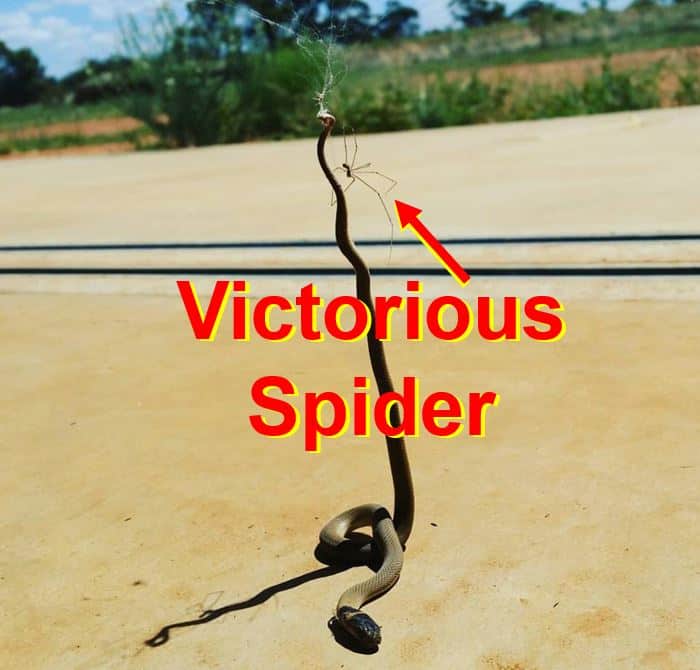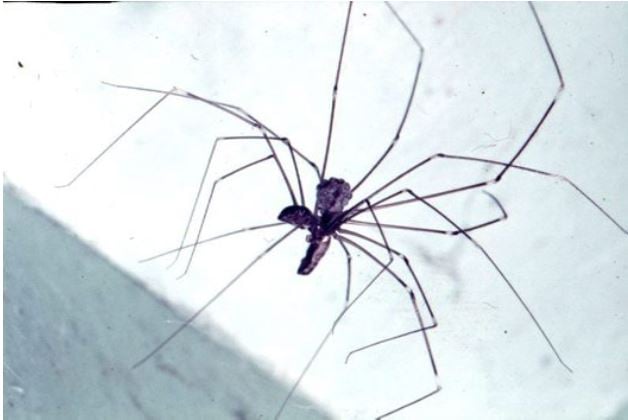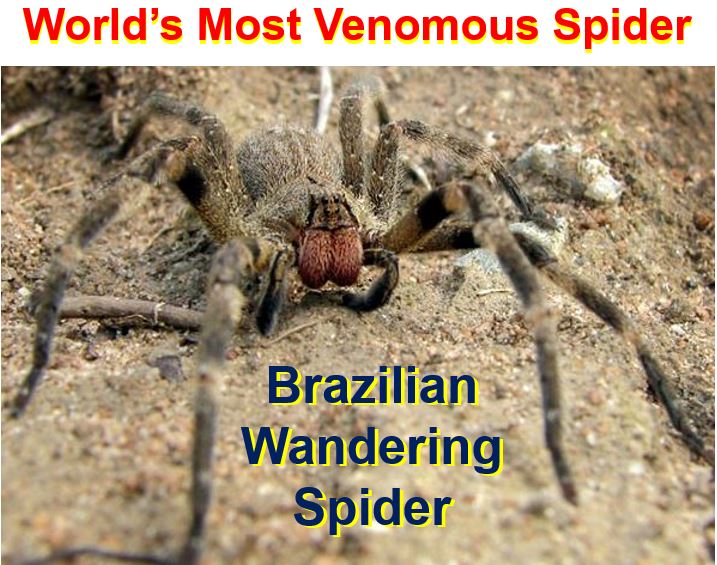Have you ever seen a spider beat a snake and then devour it for dinner in a David and Goliath moment? That is exactly what appeared to have happened in Australia when a farmer found a 1-metre long juvenile snake entangled in a web as the daddy long-legs spider was setting about making a meal out of the reptile.
For those who suffer from arachnophobia (fear of spiders) and are told that spiders never hurt anything much larger than themselves, think again – this fearsome snake was several hundred times bigger and heavier than the spider.
If you really want to see the animal kingdom’s version of David and Goliath, you should consider observing daddy-long leg spiders, known in Australia as the fangless, venomless ‘underdog’ of the spider world. To be fair, it does have a venom, which according to the Australian Museum is not particularly powerful.
 The victorious Daddy long-legs spider went about securing his prey immediately, and was soon joined by several cousins that spun a web around its tail and head. (Image: Facebook)
The victorious Daddy long-legs spider went about securing his prey immediately, and was soon joined by several cousins that spun a web around its tail and head. (Image: Facebook)
Patrick Lees, a farmer in Australia, posted a photograph of the snake prey hanging from the spider’s web on Facebook with the following comment “death by daddy long-legs”.
Mr. Lees, who works at his family-run 10,000-acre farm in Weethalle, in the Central West region of New South Wales, explained that the juvenile snake had been strung up in the spider’s web. He said he’d never in his life seen a snake killed by a spider.
A classic Australian moment
Mr. Lees said:
“When I walked out to the shed, I saw this brown snake strung up by the daddy long-legs in its web. I’d never seen anything like it before.”
“People have this idea that everything in the bush is trying to kill you, but this took it to the next level. I just thought it was a classic Australia moment and had to share it.”
The victorious spider has been joined by several cousins who have come to enjoy the feast, Mr. Lee added, and have spun a web over the reptile’s face and tail.
 According to the Australian Museum, Daddy Long-Legs Spiders (Pholcus phalangioides), which were introduced accidentally from Europe, are found throughout Australia. They feed on insects and other spiders (will the museum now add snakes to the list?). (Image: Australian Museum)
According to the Australian Museum, Daddy Long-Legs Spiders (Pholcus phalangioides), which were introduced accidentally from Europe, are found throughout Australia. They feed on insects and other spiders (will the museum now add snakes to the list?). (Image: Australian Museum)
Is the spider now a threat?
Mr. Lee wonders whether he and his family will have to be extra careful now that they have spiders on their land that have learned to kill much bigger game.
Mr. Lee said:
“The snake was dead when I found it, but I left it there because I couldn’t take down his trophy.”
“There’s no way to tell whether the daddy long-legs killed it with its venom or just outsmarted it with its web, but it was clearly the winner! It’s certainly not something you see every day!”
The Australian Broadcasting Corporation (ABC) quoted an Australian Museum expert who believes the snake got entangled in the spider’s web before the spider bit it.
Graham Milledge, manager of the museum’s arachnology collections, said:
“The most likely scenario is that the snake got entangled in the spider’s web. Usually what happens then is the spider will try to wrap the snake and then they’ll bite it.”
According to Rachel Austin, who commented on Mr. Lee’s Facebook posting:
“That is not a daddy long leg spider it is similar but the daddy long legs have round bodies. That is a cellar spider it has a slightly longer body.”
“They can kill anything caught in their Web including black widows because the vibrate their Web and it throws the things caught in their Web of balance and confused them allowing them to go in for the kill. It is not known yet if they are more poisonous than black widows or venous snakes but they are definitely smarter.”
 The Guinness Book of World Records says the world’s most venomous spider is the Brazilian Wandering Spider (Phoneutria fera). Its venom is so potent that just 0.006 mg (0.00000021 oz) is enough to kill a mouse. (Image: Wikipedia)
The Guinness Book of World Records says the world’s most venomous spider is the Brazilian Wandering Spider (Phoneutria fera). Its venom is so potent that just 0.006 mg (0.00000021 oz) is enough to kill a mouse. (Image: Wikipedia)
Is the Daddy Long-Legs Spider dangerous? No
Many people believe the Daddy long-legs spider has the most potent venom of all spiders. The Australian Museum says there is no scientific evidence to support this. The myth probably started when it was seen killing and eating a Redback spider.
The museum says the spider’s venom is not that potent, not even for insects.
Experts had thought its fangs were not capable of puncturing human skin. However, the tiny fangs (about 0.25mm) did pierce human skin in a test carried out in the US TV show Mythbusters – however, the stinging sensation was mild and very short-lived.
The majority of experts, including those at the University of California, Riverside, say that the Daddy long-legs spider is not considered as harmful to humans.
The Museum adds:
“However, in the unlikely event of a bite from this species, a positive identification of the spider by an expert should be made and medical attention sought if any reaction persists for more than a short time.”
Video – Are Daddy Long-Legs Spiders poisonous?
In this video, Daddy Long-Legs’ venom is injected into a human subject, who clearly experiences no negative effects.
